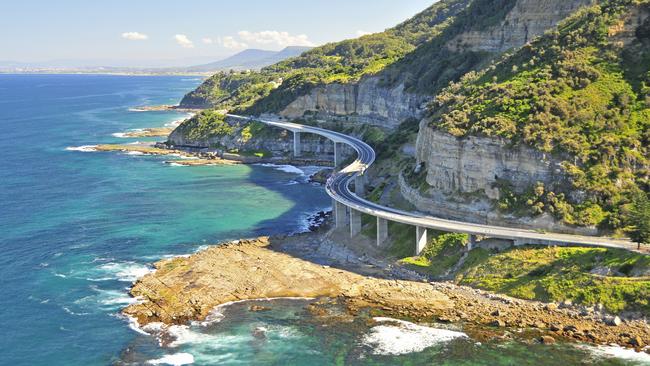A short history of the Australian Open – from a Perth Zoo sideshow to economic juggernaut
- Written by Hunter Fujak, Lecturer in Sport Management, Deakin University
From relatively humble beginnings, the Australian Open has emerged as a centrepiece in both the global tennis and Australian sporting calendar. With the 2024 tournament approaching, the event is now a centurion – it’s been 101 years since it became a designated grand slam, and 119 years since the very first edition.
While the Australian Open is now firmly known as a Melbourne event, the tournament used to rotate[1] across Australasia until 1972. Between 1905 and 1971, it was most often hosted in Sydney (17 times), Melbourne (16), Adelaide (15), Brisbane (seven), Perth (three), and across the ditch in New Zealand (once in Christchurch, once in Hastings).
These early tournaments were a far cry from the economic enterprise of the modern grand slam; the 1909 edition, for instance, was held in the Perth Zoo.
And even after the International Lawn Tennis Federation designated[2] the Australian Open as one of the four grand slam tournaments in 1923, it lagged behind the others for quite some time. This was mainly due to Australia’s remoteness, the inconvenient timing of the tournament in December or January, the comparatively poor facilities and the low prize money.
In fact, the tournament did not really flourish until the 1980s – well into the “open era[3]” of professional tennis.
The growth of the Australian Open since the 1980s has occurred in parallel to the development of Melbourne as a cosmopolitan city. Australia’s deindustrialisation and financial deregulation in the early 1970s saw Sydney rise as the commercial capital of the country, while Melbourne languished[4].
In response, Melbourne turned to sport and culture as a form of economic salvation[5], moving away from manufacturing and towards tourism, leisure and spectacle.
This resulted in significant infrastructure investment, including new grandstand capacity at Flemington racecourse and the installation of lights at the Melbourne Cricket Ground. Perhaps most significant was the building of Melbourne Park as a permanent facility for the Australian Open in 1988.
Despite controversy[6] around the necessary rezoning of public lands to create Melbourne Park, the relocation from the grass courts of Kooyong tennis club was an immediate success[7]. Total attendance increased from 140,000 to 266,436 in the first year.
The tournament has progressed by leaps and bounds since then. The 2023 tournament broke attendance records[8], with 839,192 people coming through the gates.
Read more: The retirement of Roger Federer is the abdication of tennis royalty[9]
By the numbers
The modern Australian Open is a major contributor to the Australian economy, as well as a mammoth operational undertaking.
The 2023 tournament[10] featured a total of 817 players from 68 nations and was reported on by more than 800 journalists and photographers from 52 nations. Incredibly, more than 12,000 staff from Tennis Australia, Melbourne & Olympic Parks and other related agencies helped stage the tournament.
Economically, over six million people have attended the Australian Open in the past decade, contributing an estimated[11] A$2.71 billion (US$1.76 billion) to the Victorian state economy. In 2020[12], the last tournament before COVID, visitors booked 574,970 hotel night stays and spent on average A$209 per day.
The inherent cultural value of the Australian Open is apparent in annual surveying of local sentiment, with 99%[13] of Victorians agreeing in 2022 “it is important for Victoria to host the Australian Open each year”.
Strong local support is important given the Victorian government invested A$972 million[14] (US$629 million) of taxpayer funds to redevelop Melbourne Park between 2010 and 2019 to secure the Australian Open hosting rights through 2046.
Future challenges
The length of this deal is significant, given Saudi Arabia and other nations have become increasingly aggressive in attempting to rebrand themselves as global sporting powers[15] by making bids to host prestigious events.
Notably, it has emerged in recent weeks that Saudi Arabia is exploring an investment in professional tennis that could, at minimum, jeopardise[16] Australian Open lead–up events that are held across the country in early January.
The tennis tour has also entered a period of talent renewal following the retirements of generational players Roger Federer, Serena Williams and soon Rafael Nadal. As a result, the tournament is having to market new, less familiar faces to an Australian public. Hence, the focus on rising stars Coco Gauff, Carlos Alcaraz and Jannik Sinner on this year’s tournament website[17].
Read more: The 2023 Australian Open pauses a year of profound political tensions in tennis[18]
Perhaps the tournament’s biggest challenge, however, will be its longer-term adaption to climate change[19]. Players have frequently cited the Australian Open as particularly taxing due to the heat, which can at times be extreme[20]. The first heat policy was only introduced in 1998.
In response to this growing challenge, a more extensive, research-based extreme heat policy was introduced in 2019[21]. The new heat stress measure, which can result in the suspension of play, considers four climate factors: air temperature, radiant heat, humidity and wind speed. It also takes into account the physiological differences between the adult players, wheelchair participants and junior athletes.
Severe heat is not just a risk for athletes, but attendees. During the 2014 tournament for instance, 970 attendees were treated for heat exhaustion[22] on a single day when the temperatures hit 42 degrees. A ball kid also fainted[23].
Climate change poses challenges beyond heat. The Black Summer bushfires of 2019, for instance, brought several days of smoke that caused breathing problems[24] among some players. In 2023, the tournament was suspended twice[25] on a single day, first due to heat and then torrential rain.
Tournament organisers have added an extra day to this year’s tournament[26] to become a 15-day event. This will not only help mitigate any weather-induced scheduling congestion, but will also reduce the number of late-night finishes, which have drawn the ire from players and fans[27].
This will no doubt help the tournament deal with short-term challenges, but further adaptation may be necessary to ensure its long-term success. If history is any indication, the Australian Open has proven itself open to change.
References
- ^ rotate (www.grandslamhistory.com)
- ^ designated (ds.amu.edu.et)
- ^ open era (olympics.com)
- ^ Melbourne languished (www.tandfonline.com)
- ^ economic salvation (www.tandfonline.com)
- ^ controversy (www.tandfonline.com)
- ^ immediate success (search.informit.org)
- ^ broke attendance records (ausopen.com)
- ^ The retirement of Roger Federer is the abdication of tennis royalty (theconversation.com)
- ^ 2023 tournament (www.tennis.com.au)
- ^ estimated (ausopen.com)
- ^ In 2020 (ausopen.com)
- ^ 99% (ausopen.com)
- ^ A$972 million (sport.vic.gov.au)
- ^ global sporting powers (www.espn.co.uk)
- ^ jeopardise (7news.com.au)
- ^ tournament website (ausopen.com)
- ^ The 2023 Australian Open pauses a year of profound political tensions in tennis (theconversation.com)
- ^ climate change (www.proquest.com)
- ^ extreme (www.theguardian.com)
- ^ 2019 (www.wtatennis.com)
- ^ heat exhaustion (www.theage.com.au)
- ^ fainted (www.businessinsider.com)
- ^ caused breathing problems (www.theguardian.com)
- ^ suspended twice (www.theguardian.com)
- ^ tournament (ausopen.com)
- ^ players and fans (www.foxsports.com.au)
Authors: Hunter Fujak, Lecturer in Sport Management, Deakin University










